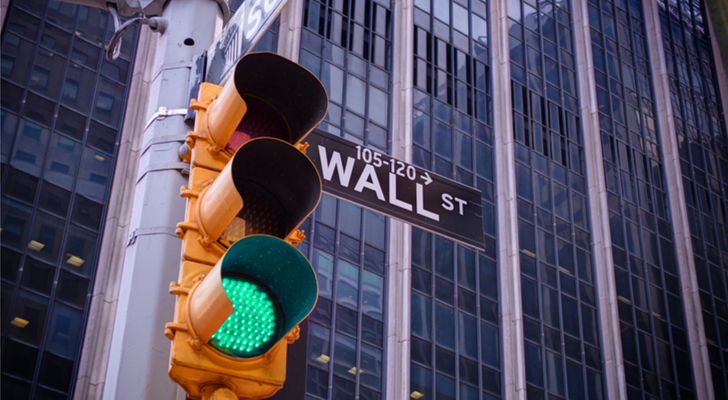Well, there it is. The Dow Jones Industrial Average (INDEXDJX:.DJI) reached (and then surpassed) the ballyhooed 20,000 level today, with all the ensuing, expected fanfare.
That is to say, the financial media machine is now buzzing about Dow 20,000.
But it wasn’t just a key numerical milestone that was met. This move from one big round number from the previous big round number (19,000) was the second-fastest 1,000-point move the Dow Jones has ever mustered. It took just 42 trading days to traverse the distance, assuming the DJIA is able to hold on to today’s historic advance.

The big question arising from the Dow 20,000 event now: Now what?
How It Happened
Whether you like the guy or hate him, there’s no denying President Donald Trump’s pro-business mindset had a lot to do with the Dow Jones Industrial Average’s amazing last-lap stretch to 20,000. The blue-chip index is up nearly 11% since the day after November’s election. Most of that buying was spurred by what investors hope he will do rather than what investors are sure he will be able to do.
It might not be a bad bet. Make no mistake, though: It is speculation. The Dow Jones is now valued at a trailing P/E of 20.6 and a forward-looking one of 18. Both are above historical norms … even an adjusted norm that factors in the backdrop of oddly low interest rates.
It’s also worth noting that not all 30 of the Dow’s constituents equally contributed to the rally. Indeed, had it not been for the 11.7% gain Walt Disney Co (NYSE:DIS) dished out since the Dow was at 19,000 on Nov. 22, and had it not been for the same 11.7% gain from Goldman Sachs Group Inc (NYSE:GS) for the exact same timeframe, nobody would be celebrating anything now.
Nevertheless, we’re here, and investors are already looking around at one another, trying to figure out why it really matters, and what’s next.
Why Dow 20,000 Could Actually Be Bad
In the world of psychological studies, the Hawthorne effect is a “type of reactivity in which individuals modify an aspect of their behavior in response to their awareness of being observed.” In other words, a study’s validity may be in question because the test subject behaved as they thought they were supposed to in order to yield desirable results rather than behave as they normally would were they not part of a study.
One has to at least posit this question: Did the Dow Jones reach 20,000 merely because investors were sure they were collectively going to make it happen? Or, perhaps on a subconscious level, they wanted to drive the Dow Jones Industrial Average to 20,000 just to see what would happen once it got there.
It’s certainly a possibility given the amount of Dow 20,000 chatter that’s been circulating since mid-December. Throw in the Trump effect, and it should come as no surprise at all.
If the latest run-up was a purely psychological one, then it poses a problem: What happens now that the experiment is over? The trumped-up (no pun intended) buying interest has evaporated.
Yes, that’s only a prediction. But now that there’s little left for the media or behaviorists to discuss, interest in keeping the Dow propped up above 20,000 is apt to wane. Especially once investors become increasingly aware that President Trump hasn’t actually spurred any corporate earnings growth yet — and valuations are beyond their reasonable ceiling.
Bottom Line
Never say never, especially in trading. Anything can and eventually will happen. Even if this “breakout” is a real breakout, though, it’s still apt to be short-lived.
That’s because bearish effects beyond wacky valuations are converging at the same time.
One of those is the usual tepidness (and sometimes bearishness) we see in February. While much of the loss abates before the end of the month, the market’s average day-by-day performance in any given year dishes out a February setback.
The February in a year a president is inaugurated is typically a rough month.
The strength we’ve seen through today looks like the typical calendar-based setup for weakness. The fact that there’s nothing left to motivate traders now that Dow 20,000 has been eclipsed only underscores the idea.
As of this writing, James Brumley did not hold a position in any of the aforementioned securities.
